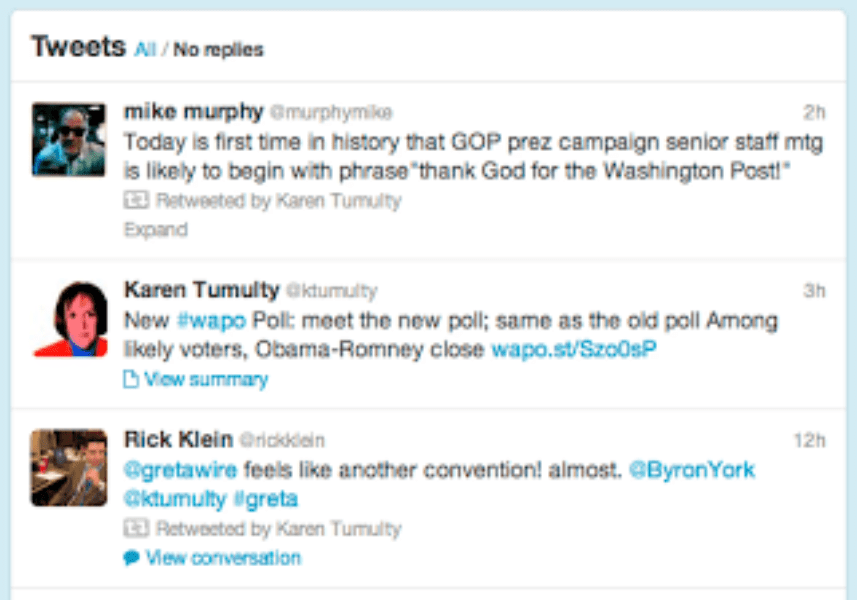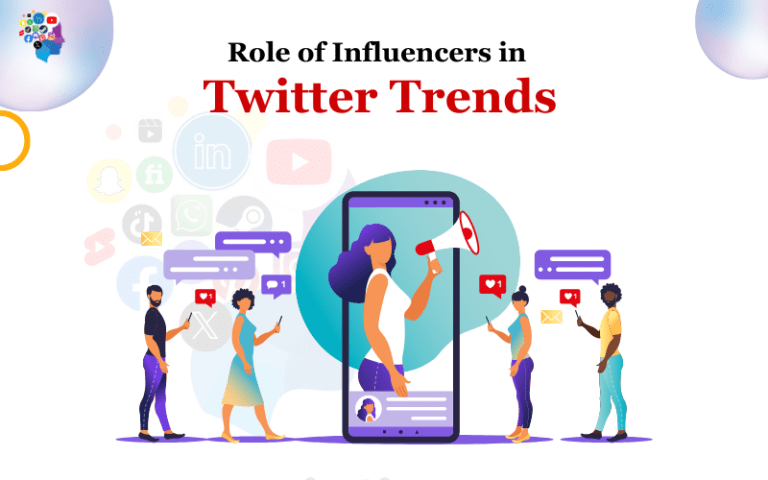Twitter has become a powerful tool for journalists. Its real-time nature allows journalists to report news as it breaks. The brevity encourages sharper and more effective writing. But, the 280-character limit can also be restrictive for journalists trying to share in-depth reporting or storytelling.
This is where Twitter threads have emerged as an immense Uses of Twitter Threads in Journalism.
Table of Contents
What are Twitter Threads?
Threads allow users to connect a series of tweets by replying to an original tweet with text, images, or videos. All the replies are then neatly grouped under the original tweet as a cohesive narrative.
Threads allow journalists to:
- Share long-form stories that go beyond 280 characters
- Provide context around breaking news or events
- Curate first-hand accounts and reactions as events unfold
- Gather information by posing questions to followers
- Directly engage readers in discussions
- Link to their published articles and outside resources
- Showcase multimedia reporting with images and videos
- Promote and recap live coverage of events or news
Also read: How to Create a Twitter Thread
Key Uses of Twitter Threads in Journalism
Journalists have adapted Twitter threads for various applications:
1. Breaking News Reporting
When news breaks, journalists can provide live updates from the field through threads. They can share photos, videos, witness accounts, official statements, and their observations as the event unfolds.
Threading updates together gives readers a coherent, real-time view. Rather than disjointed individual tweets, the story is structured logically.
For example, Washington Post journalist Rebecca Tan used a thread to report from the scene of a shooting at a grocery store:
Police confirm shooting at Fred Meyer in Richland, Wash. I’m on the scene, where multiple agencies have responded. Working to learn more details.
I’m seeing police enter the Fred Meyer with rifles and shields. One office tells me they believe the threat is “down.”
Police now confirm to me the suspect is down. Waiting on details about casualties/injuries.
2. Storytelling
Threads allow reporters to tell compelling, cohesive narratives that don’t fit 280 characters. They work well for story structures with a hook, plot, characters, and resolution.
Many journalists now regularly recap their latest long-form articles with engaging threads as a way to promote their work.
For example, Ellen Barry of NYT Magazine broke down her feature story on infamous cancer fraudster Anna Delvey using a 12-tweet thread laying out the fascinating narrative.
3. Interviews and First-hand Accounts
Threads are a quick and convenient way for journalists to interview eyewitnesses of news events or experts on a topic using Twitter itself.
The replies allow the interview subjects to respond with their tweets, creating an interactive dynamic. Journalists can share the full interview as a curated, published thread.
LA Times reporter Matt Pearce used Twitter to interview an American volunteer fighter in Ukraine:
Matt Pearce: “First of all why did you decide to go fight for Ukraine?”
James Vasquez: “I’m prior military, I have 8 years in the Marine Corps Infantry. I have training. Ukrainian people are strong and brave, they deserve our support.”
Matt: “How did you get there?”
James: “I bought a plane ticket to Poland…”
4. Crowdsourcing and Tips
Journalists use threads to crowdsource on-the-ground perspectives, photos/videos, and valuable tips related to developing news stories.
Engaging audiences on Twitter as a news event unfolds can reveal key insights that reporters may miss otherwise.
For example, Brian Entin tweeted an open call for tips on the Gabby Petito missing person case, leading to crucial leads:
If you have any tips related to Gabby Petito and fiancé Brian Laundrie, please reply or DM me. Working on breaking updates tonight for @NewsNationNow
We want to hear from you, especially if you saw them between Grand Teton and Florida around August 27-30.
5. Community Engagement
Threads allow journalists to engage readers in insightful discussions and debates around timely topics. They can pose questions, respond to replies, ask for opinions, and link resources.
This builds community, trust, and interest. It models public discourse around shared current events.
Latoya Peterson, editor of the LA Times Opinion section, fosters ongoing discussion around race and culture issues using Twitter threads to converse with her 35k+ followers.
6. Multimedia Reporting
Through threads, reporters can share photos, videos, graphics, illustrations, and other multimedia from events or stories as they unfold. This adds vivid visual storytelling that can express more than text.
Multimedia reporting helps bring remote events and locations to life. Short video clips work especially well within threads.
Wesley Lowery, 60 Minutes correspondent, often tweets photos and videos from the field while reporting stories:
Most don’t realize just how close the angry mob got. Rioters first breached the Capitol 20 minutes after I took this video. pic.twitter.com/2OUm4AI3GR
7. Recapping and Promoting Stories
Threads work as abridged versions of longer stories that reporters can tweet to promote published articles or broadcasts. Summarizing key findings or takeaways drives traffic to their full work.
It serves as a quick recap even for audience members who have already seen the full story.
New Yorker writer Jelani Cobb tweeted a popular thread linking to and recapping his latest print feature on race relations:
Article preview. New @NewYorker: Three years ago, I visited Sam Dubose’s memorial in Cincinnati. Dubose was killed by police in 2015. His death, like those of Walter Scott and Freddie Gray, raised questions about how far reform had actually progressed. 1/x
After Philando Castile’s death, Minneapolis aimed to overhaul its police department. But George Floyd was still killed. After Ferguson, Missouri’s police force remained largely intact. 2/x
8. Link Sharing
Threads allow journalists to curate multiple links around a story – to their past coverage, other sources, background info, analysis, fact-checks, context, etc.
This provides a rich, well-rounded information bundle without being limited to one link, as in a normal tweet.
Business Insider editor Claire Atkinson shared a thread with critical context surrounding Elon Musk’s Twitter takeover:
Elon now owns Twitter. What does that mean? I’ll summarise some key points around content moderation, payments, employees, and shareholder lawsuits.
Let’s start with an important point: Twitter has lost the trust of some users over poor content moderation. Musk is unlikely to reduce moderation. He wants growth.
9. News Commentary and Analysis
Twitter threads enable journalists to share quick commentary/analysis around news – as events unfold or after stories are published.
These analyst threads help break down news implications, provide context, fact-check claims, and give informed opinions around the latest updates.
CNN anchor Jake Tapper often tweets sharp, insightful threads sharing his take on major news stories:
Events of historic consequence unfold with great speed and warning in our era. On this armed incursion of Ukraine, Biden is speaking with focus and clarity.
10. Newsletters and Recaps
Many journalists now compile their latest threads into weekly roundup newsletters or recaps.
Curating threads allows them to showcase their Twitter reporting and storytelling in an organized newsletter form for those who may have missed it.
Buzzfeed reporter Jane Lytvynenko publishes a weekly “Viral Labor” newsletter with her latest Twitter threads on media and disinformation.
Best Practices for Journalists Using Twitter Threads

Here are some tips for journalists to maximize the impact of their Twitter threads:
- Craft a compelling original tweet to frame the thread and draw readers in. Summarize the key highlight or question.
- Link back to your earlier tweets in a developing thread to retain context as new users join.
- Quote-tweet sources when sharing comments and perspectives to provide attribution.
- Capture attention with visuals – tweets with photos/videos tend to perform better.
- Foster engagement by responding to replies from readers.
- Check the accuracy of claims/facts shared – threads can spread misinformation quickly.
- Avoid editorializing breaking news – stick to facts until analysis is possible.
- Be transparent when tweeting personal opinions or unverified claims.
- Give proper credit when threading together other accounts’ tweets. Don’t pass off their work as your reporting.
- Compile threads into weekly newsletters for deeper recaps beyond fleeting tweets.
Innovative Examples of Journalist Twitter Threads
Here are some standout examples of journalists using threads in creative, high-impact ways:
1. Serialized Reporting
Brandon Smith, reporter for FOIA nonprofit Property of the People, tweeted a serialized exposé uncovering waste and corruption in the Pentagon’s budgeting process.
Posted over 12 threads, it revealed internal documents and broke major news on the $700 billion annual military budget.
2. “Behind the Scenes” Insights
Seattle Times journalists covered the logistics of newspaper reporting using a fascinating thread on how they tackled a specific breaking news story.
It gave readers a “behind the scenes” look into the news production process rarely visible to the public.
3. Curated Subject Q&As
NBC News reporter Ben Collins hosted an impromptu AMA thread allowing his followers to directly ask questions to an ex-conspiracy theorist follower Collins had interviewed.
It made the Q&A engaging and widely accessible. Collins curated and tweeted the most insightful questions and answers.
4. “Live Twitter Coverage” of Events
LA Times reporter James Queally live-tweeted a high-profile criminal trial using detailed threads to recap courtroom proceedings in real-time as an experiment in “live Twitter coverage”.
It increased public accessibility and provided key trial insights with the paper highlighted in its main coverage.
5. Crowdsourced “Oral History” Threads
On historical dates, journalists crowdsource memories from social media users who lived through major past events to curate “oral history” threads.
It surfaces vivid personal accounts often lost to time, creating living histories around impactful moments.
Tools for Managing and Curating Threads
Here are useful tools journalists have adopted to organize, manage, and re-purpose their threads:
- Thread Reader App – Converts threads into easy-to-read articles
- Revue – Newsletters for curating and sharing your best threads
- Threads Emails – Get thread responses delivered to your inbox
- TweetDeck – Manage, schedule, and monitor multiple threads
- Thread Preview – Preview threading before tweeting
- Storify – Embed media-rich threads on websites
- Wakelet – Collaborate with colleagues on public threads
The Future of Threads in Journalism
Twitter threads have become integral to modern journalism. They enable more engaging, transparent reporting and allow journalists to tell richer stories within Twitter’s constraints.
Looking ahead, we will likely see continued innovation in how journalists harness the format – live commentary of events, curated crowdsourced perspectives, serialized investigations, immersive multimedia stories, and deeper community interaction.
As newsrooms further embrace social journalism, Twitter threads provide an agile way to report news as it unfolds while retaining narrative context. The conversational nature of threads pulls journalism closer to its public service mission of keeping communities informed and connected.







